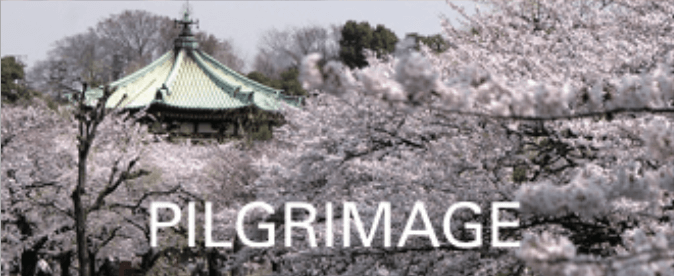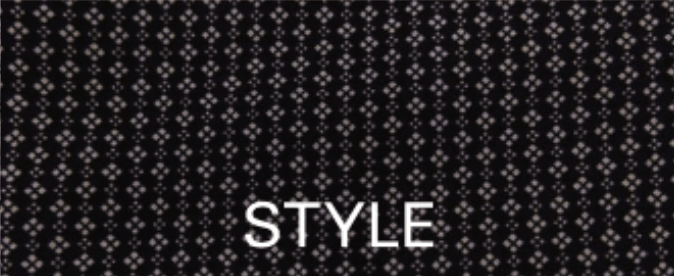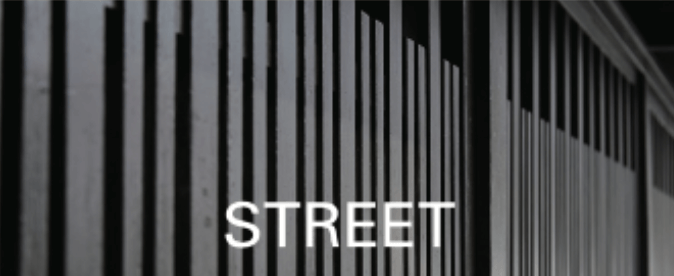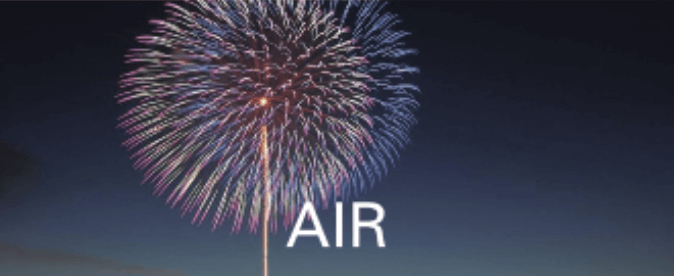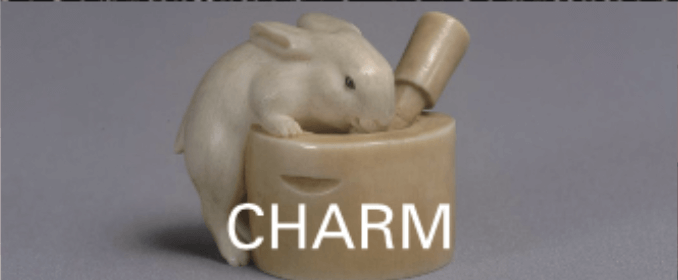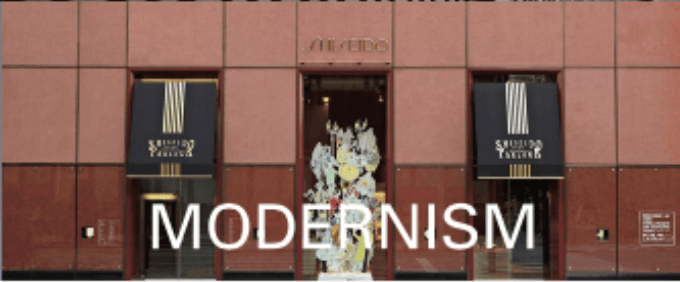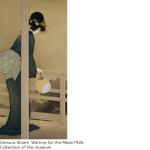
This museum, located in Okazaki Park, opened in commemoration of the enthronement ceremony of Emperor Showa (1901 – 1989) and was named as the Kyoto Enthronement Memorial Museum of Art, before World War II. The collection includes Japanese paintings, Western paintings, and craft works, from the Meiji period (1868 – 1912) to the Heisei period (1989 – 2019).
Uemura Shoen (1875 – 1949) was born in the Hajajya, a tea-leaf shop of “Chikiriya” and was cultivated in the traditional culture of Shimogyo Kyoto in the Meiji era. Shoen studied the Shijo school of formal Japanese painting, under Takeuchi Seiho (1864 – 1942). She aimed for “a picture like a serene and fragrant gem without a single vulgarity.”
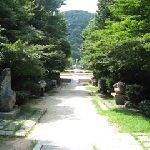
Mt. Kabutoyama erupted 12 million years ago. It is composed of andesite, which is Pyroxene. It is a completely different formation from the adjacent Mt. Rokko, which is composed of Mikage Ishi (granite). It was a sacred mountain of worship where the bronze dagger-axe was excavated. 90% of the park’s 83ha area is forest.
14 sculptures made in modern times are lined on both sides of the road to the monumental square. They look like they are worshiping this mountain as the enshrined object. This sanctuary of ancient Japan has been revived in modern ways.
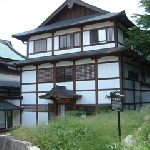
It has been said that there used to be Yunoyama Palace in Arima Kobe by Toyotomi Hideyoshi (1537 – 1598), the powerful feudal lord and Imperial Regent who unified Japan.
In the Great Hanshin-Awaji Earthquake in 1995, a part of Hideyoshi’s legendary Palace and traces of its gardens were discovered under Kuri, the kitchen of Gokurakuji Temple. The bath was a steam bath and a bathtub surrounded by rocks. Tiles and pottery, including dragon-decorated tiles were excavated, which were reminiscent of life in the palace.
This museum shows the remains of the palace inside and displays materials to show deep relations with Hideyoshi, who had restored Arima Onsen, hot spring.

This garden is in about 10 minutes by the ropeway to look down Nunobiki no Taki, which is originated Mt. Maya consisted of granite and was praised as famous mineral water by the ocean-going ship of a port of call to Kobe. This garden has about 200 species and 75,000 stumps of herbs and others and is one of the largest garden of herb in Japan. The port of Kobe opened on January 1, 1868.
Herbs were mainly introduced to Japan during the Edo period (1603 – 1868). Herbs had been cultivated in Nagasaki as appreciating plant and medicinal plant, at the time. Peppermint, sage, and chamomile were come from overseas during the Bunsei era (1818 – 1830) in the Edo period.
-The port of Nagasaki was the only opened to the ocean-going ship in

Hashidate Town was known as the wealthiest village in Japan, where the shipowners’ houses were lined up. The owners built wealth through the Trade of Kitamae-bune, cargo ships sailed the Japanese Sea in between Ezo, Hokkaido and Osaka, in the the Edo period (1603 – 1868), and the Meiji period (1868 – 1912).
This museum utilized the former residence of Sakaya Chobei, who was the shipowner of Kitamae-bune. Built in 1876, this museum introduces the momentum of the history through the elaborately designed items such as Funa-Ema, a votive picture of ship, a model ship, photographs and Uchikake, a long outer robe.

This museum is located on the Mikimoto Pearl Island, where the worlds first farming of semi-circular pearls began in 1893, by Kokichi Mikimoto. In 1878, Kokichi went to Tokyo on foot, saw the pearl trade in Yokohama, and became commuted to creating world class jewelry.
The museum introduces his great undertaking to realize his dream. It includes the art and crafts exhibited at the World Expo in Paris (1937) and at other EXPOs, his love of the seaside of his home town, and the history of pearl jewelry.
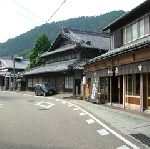
Kuwana was a key point of transportation connecting the Kinai region, provinces surrounding Kyoto and Nara and the Tosan-do Road, an ancient division of the country and the main road running through. It was situated along the central mountains of northern Honshu, Tohoku region, since ancient times.
Kuwana flourished as a relay point to Edo, to transport wood from Kiso and goods from Shogun demesne in Mino and Hida. Although the townscape at that time in Kuwan City was lost after the Isewan Typhoon in 1959, the townscape remains in Tado Town.
Tado Town has been guarded by Mt. Tadosan (Height 403 m), where people have come to pray for rain for farming and life security, since ancient times.
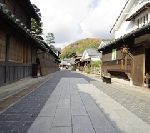
In the old townscape of Takehara, residences of wealthy merchants and merchant houses are lined up. Rai Koresuga’s Old House is a building from around 1775. He was the grandfather of Rai Sanyo (1781 – 1832), a Japanese Confucian scholar, historian and Imperialist, who supported emperor-centered nationalism at the end of the Tokugawa Shogunate period.
The basis of Confucianism is the “Ie, house” of blood relatives and family. The “Ie” was not a home where families lived together, but a place where ancestors’ spirits and souls returned. It was also thought to be a place to revive human nature.
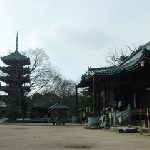
This temple is located on the banks of Shido Bay, where the water is beautiful and the legend of Amas, a female diver and a male diver remains. This temple was founded in the Nara period (710 – 794). It is said that this temple was the family temple built by Fujiwara no Fuhito (659 – 720), a powerful member of the Imperial court, to perform religious rites for the salvation of the departed soul of Fuhito’s mother. Fuhito’s mother is said to be Ama.
The highlights of this temple are: 1) Niomon, Deva gate, which was built by the Matsudaira family, the feudal lord of Takamatsu Domain in 1670, and is one of Japan’s three most famous gates using Mitsumune Zukuri, a three ridge construction. There are roofs in front of and behind the gate and a large roof is placed on top of those. – 2) the Statues of Kongo Rikishi, a pair of guardians of a temple. There is Agyo, an open-mouthed statue and Ungyo, a closed mouthed statue, said to be made in the Kamakura period (1185 – 1333) by Unkei (1150 – 1223), a Japanese sculptor of the Kei school. – 3) and Karesansui, a dry landscape garden, designed by Shigemori Mirei (1896 – 1975), a modern landscape architect.
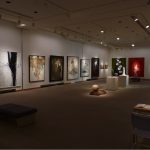
This museum adjacent to Maizuru Park, Takanabe, holds an exhibition related to Miyazaki and possesses Calligraphic works of Akizuki Tanetatsu (1833 – 1904), the son of the 9th lord of the Takanabe domain, Akizuki Tanetada, as a town museum of art.
This museum introduces a Series of painting “Suijyo”, objects on the water, by Shimizu Seisaku (1943-), who came from Miyazaki. He draws people in the horizontal layout, with including sacred and evil characters. He develops the highly decorative beauty with the composition style.
There was a clan school, Meirindo, at the Takanabe Domain in the Edo period (1603 – 1868), where the retainers, farmers and common people could study the Analects of Confucius, calligraphy and mathematics. The beauty of Takanabe Twon is endorsed by intelligence and knowledge rooted locally.
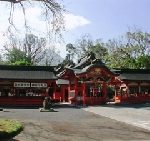
This shrine boasts a 1,300 year history of watching the sea of Satsuma Kagoshima, as a guardian of sailing, traffic and fisheries, from the northern foot of Mt. Kaimondake. This vermillion shrine building is elegant and the Kohai-bashira, the pillar of the roof over its steps, is carved with Dragons in the clouds.
This treasure hall possesses the National designated cultural property, Matsuume makie kushige, a gold-lacquered toiletries case with pine and cherry blossom, the frame from Ryukyu Kingdom and old documents related to the Shimazu clan, the feudal lord of the Satsuma Domain, which connected the dynasty cultures of the Heian, Kyoto with those of Ryukyu, Okinawa.
